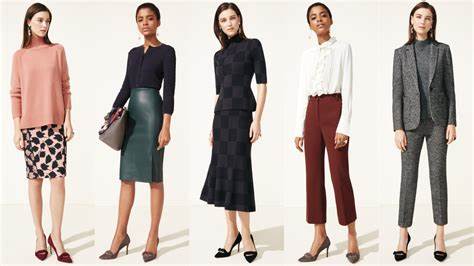In the modern corporate landscape, the traditional business suit is no longer the exclusive attire of choice. Business casual dress has emerged as a popular and versatile alternative, offering professionals a more relaxed yet polished appearance. This article delves into the world of business casual dress, exploring its meaning, key elements, and tips for striking the perfect balance between professionalism and style.
Contents
Defining Business Casual Dress
Business casual is a dress code that falls between formal business attire and casual wear. It allows individuals to maintain a professional image while incorporating elements of comfort and personal style. Unlike traditional business attire, which typically includes suits, ties, and formal dresses, business casual offers more flexibility and adaptability to different workplace environments.
Key Elements of Business Casual Dress
Tops: Business casual tops for men can include collared shirts, such as button-downs, polo shirts, or well-fitted knit sweaters. Women can opt for blouses, tailored tops, or sweaters. It’s important to choose fabrics that are appropriate for the season and workplace.
Bottoms: Men can wear dress pants, chinos, or tailored khakis as part of their business casual ensemble. Women have a wider range of options, including dress pants, skirts, tailored dresses, or well-fitted dressy jeans (if allowed in the workplace). Avoid overly casual or distressed jeans.
Footwear: Men can opt for dress shoes, loafers, or polished leather shoes. Women can choose closed-toe shoes, flats, low heels, or dressy boots. Sneakers and flip-flops are typically not appropriate for business casual attire.
Accessories: Accessories should be tasteful and complement the overall look. Men can wear belts that match their shoes, while women can add subtle jewelry, scarves, or belts to enhance their outfits. It’s essential to strike a balance between professionalism and personal style.
Tips for Nailing the Business Casual Look
Understand the Dress Code: Familiarize yourself with your workplace’s specific guidelines for business casual dress. Some companies may have more relaxed or more formal interpretations, so it’s crucial to align your attire with the expectations of your industry and organization.
Fit is Key: Ensure that your clothing fits well and is neither too loose nor too tight. Tailored garments create a polished and professional appearance. Avoid overly baggy or revealing clothing, as it may undermine the desired professional impression.
Maintain a Polished Appearance: Even though business casual allows for more flexibility, it’s important to maintain a polished and well-groomed appearance. Pay attention to personal hygiene, ensure your clothing is clean and wrinkle-free, and take care of your shoes and accessories.
Consider the Occasion: While business casual is suitable for most everyday work environments, certain occasions may call for a slightly more formal or casual approach. If attending a client meeting or a professional event, it’s advisable to err on the side of slightly more formal attire.
Use Layers for Versatility: Business casual attire allows for layering, which provides versatility and adaptability to different temperatures and environments. Pairing shirts with blazers, adding cardigans or light sweaters, and utilizing accessories like scarves can elevate your look and add a touch of sophistication.
Business casual dress offers professionals the freedom to showcase their personal style while maintaining a professional appearance. By understanding the key elements, adhering to workplace guidelines, and striking the perfect balance between professionalism and comfort, individuals can confidently navigate the realm of business casual attire. Remember, the goal is to exude professionalism, respect the company culture, and present oneself as a capable and stylish professional in any business setting.
